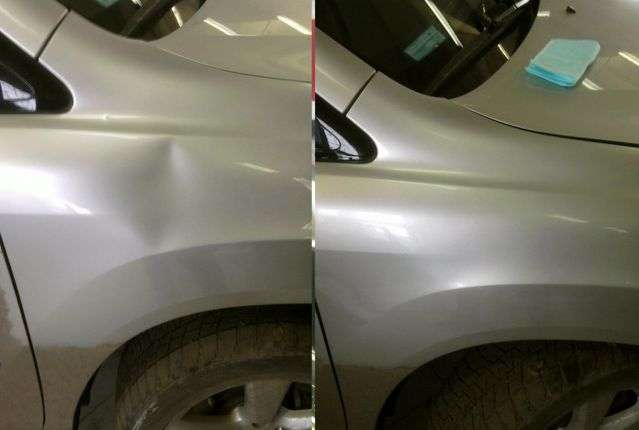For a long time, repair work on the restoration of the car body was considered the most expensive. The masters had to not only remove the dent and restore the geometry of the surfaces, but also perform complex painting work. With the advent of new technologies, everything has changed. Now masters offer dent removal without painting. Similar services are provided at different service stations, including the Marafet Auto tuning center (for more details, see the link https://marafet-avto.com/eksterer/udalenie-vmyatin.html). But before turning to specialists, it will not hurt to understand a little about the intricacies of technology and work performance.
preliminaries
Work begins with inspection and analysis of damaged surfaces. Depending on the type of defect, the repair method is selected. Deformations are as follows:
- longitudinal dents - arise from tangential impacts. For example, in case of unsuccessful lowering of the barrier;
- gentle dents - usually appear due to a car collision at low speed;
- complex damage — occurs on the stiffeners due to a collision at high speed;
- sharp defects - in the center of these bends there is often chipping of the paint coating. Defects appear due to impact with a sharp object.
There are also volume dents, which may include different types of damage listed.
Body repair methods
When the types of damage are identified, it's time to choose a repair method. Today, the following options are practiced:
- Application of glue. It is suitable for removing concave dents that are located at the bottom of the stiffeners and the bend of the body. Disassembly of the damaged area will not be required. Glue is applied to the clip and the tool is pressed to the center of the defect. Next, the dent is pulled out. When everything is finished, the adhesive composition is removed with a solvent that is harmless to the paint and varnish material.
- Thermal impact. This method is used for defects with an insignificant degree of deformation. A certain area is heated, due to which the metal begins to expand and return to its original form. No second manipulations will be required.
- Mechanical impact. The method is relevant when removing dents on stiffeners and in bend areas. Sometimes partial disassembly is necessary to get to the damage from the inside. Hooks and clubs are used in the work. The dent is squeezed out immediately from the inside. If the defect is complicated, it will be necessary to bend it back. This is necessary in order for the metal to return to its original state at the edges. The method is very time-consuming and requires caution. But in general, it is still performed faster than classic restoration with staining.

Which repair method to choose is up to the master. Only a good specialist can determine the most optimal method, taking into account the type and degree of damage. Entrust such work to professionals, and you will easily restore the integrity and beauty of your car body.


 852
852












